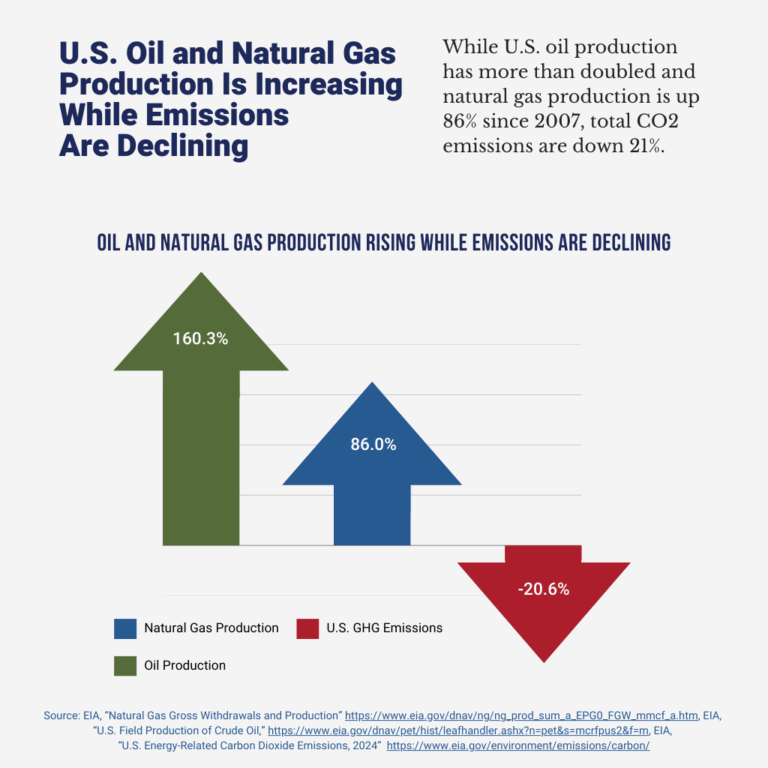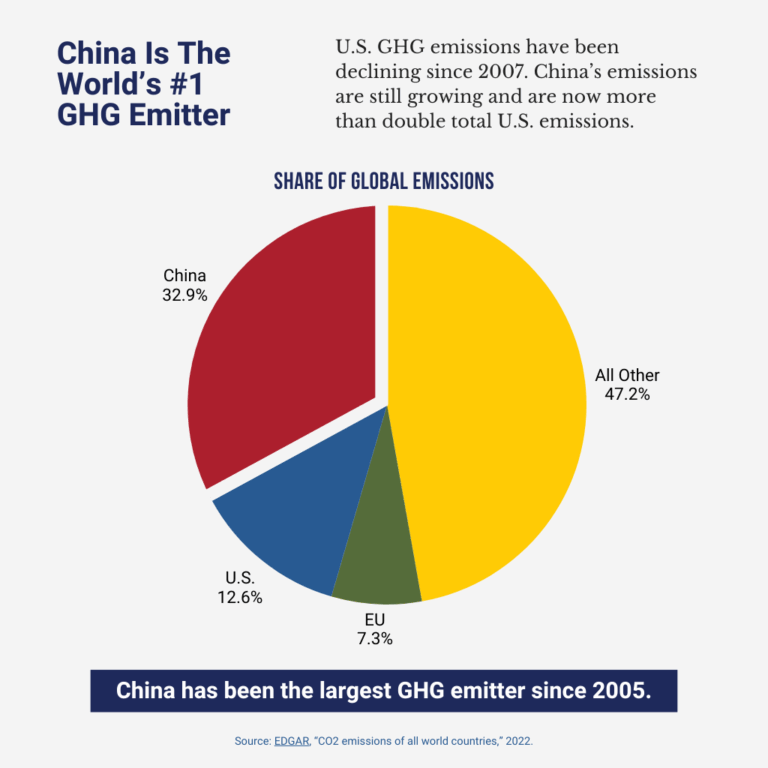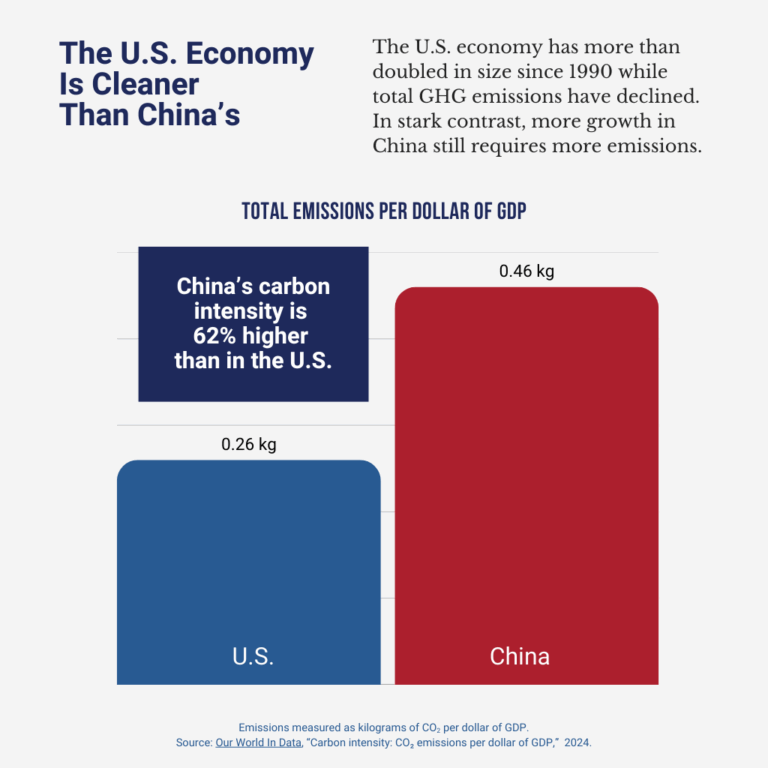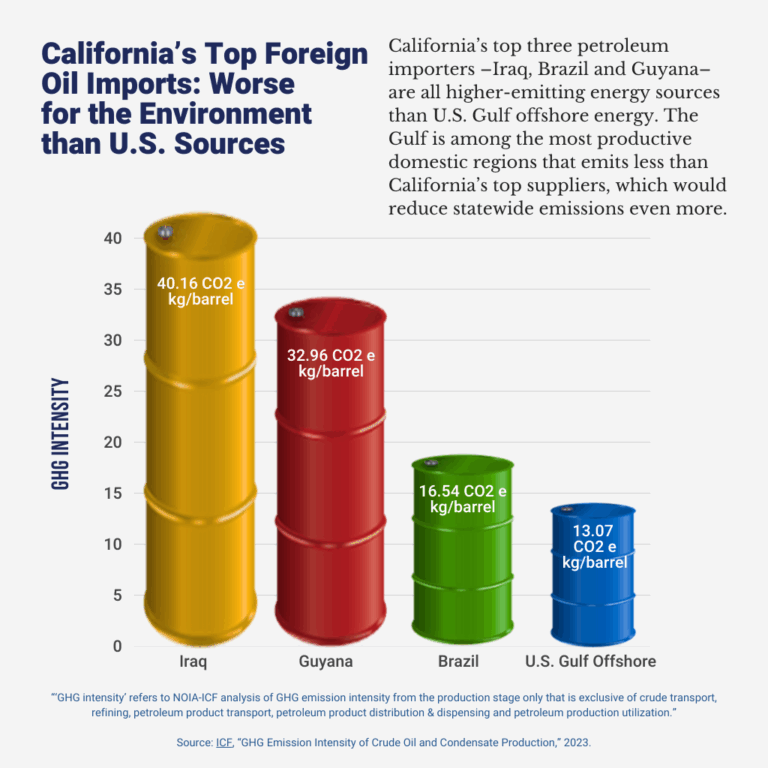California’s Counterproductive Approach to Reducing GHG Emissions
by Wayne Winegarden | August 19, 2025
The state of California, along with a host of other cities and municipalities, is suing American energy companies. The lawsuit alleges that these private U.S. companies misled the public about greenhouse gases’ impact on the climate and consequently are responsible for covering the costs associated with climate disasters. It is scheduled for a crucial hearing later this fall before the San Francisco Superior Court.
The lawsuit is hypocritical and counterproductive. It makes California’s (and the U.S.’) goal of an affordable, reliable, and low-emission energy sector harder to achieve.
The concept that greenhouse gases could have a potential impact on the climate was widely known for decades to both the public and private sectors – California included. As the Los Angeles Times documents, “back in 1989, Californians received a sobering warning: The accumulation of heat-trapping gases in the atmosphere would likely bring more droughts, floods, fires, and heat waves to the state.”
The federal government has been aware of the potential risks even longer. Yale Climate Connections “found more than 100 congressional hearings in the 1960s in which human-made climate change, the greenhouse effect, and carbon dioxide were being discussed.”
That the federal and state governments did not stop fossil fuel production based on the risks associated with greenhouse gases (GHG) is not a concerted anti-climate agenda. It is rather a testament to the uncertainty of the science – especially decades ago – and the many other critical factors that policymakers must consider. A similar argument holds for the private companies the state is suing.
Notably, California still promotes fossil fuel use, albeit begrudgingly. For instance, Phillips 66 and Valero have announced plans to shut down their refineries in the state, which would remove 17 percent of the state’s refining capacity. In response, Gov. Gavin Newsom’s administration and state legislators are promoting reforms to help keep this capacity open.
The state’s efforts to maintain its refining capacity make sense as fossil fuels remain necessary for maintaining an affordable and reliable energy system. Although the country still depends on fossil fuels, total U.S. and California GHG emissions have declined due to greater use of now abundant natural gas and innovations such as the development of cleaner oil processes. In fact, while total emissions have been declining since 2007, the production of oil (+160 percent) and natural gas (+86 percent) have been increasing.
U.S. Slashes Emissions While Producing More Energy

Also noteworthy, despite California’s overly restrictive policies during this period, the state’s emissions decline of 19.4 percent was less than the national decline of 20.6 percent.
Thanks to these declines, U.S. GHG emissions in 2024 (4,778 million metric tons of CO2) approximately equaled 1987’s emissions level (4,775) even though 2024’s total economic activity is more than 150 percent larger. Growing the economy while reducing our emissions shows the U.S. economy is becoming cleaner and more efficient.
This divergence between economic growth and emissions has yet to take place in developing economies in Asia and the Middle East. Since 1990, China’s economy has grown fourteen-fold growth while its CO2emissions are five times higher.
As U.S. Emissions Flatten, China’s Emissions Soar in 21st Century

Consistent with these diverging trends, the U.S. has not been the world’s largest GHG emitter since 2005, China is – and by a wide margin. Chinese emissions in 2021, accounted for 32.93 percent of global emissions while the U.S. accounted for 12.55 percent and the EU comprised 7.33 percent.
GDP and Emissions: U.S. Economy Becomes Cleaner While China Lags

With more emissions but a smaller economy, China’s emissions intensity per dollar of GDP is 62 percent higher than the U.S. (0.46 kg of emissions per dollar of GDP compared to 0.26 kg). As a result, federal and state policies that discourage production in the U.S., including oil and natural gas production, incentivize higher global emissions.
These trends reveal that California’s policies and its lawsuit against private businesses are counterproductive. They arbitrarily punish private companies while discouraging the use of lower-emission domestic sources of fossil fuels in favor of higher-emission sources.
When California imports oil into the state to make up for the lost production, it is doing so from sources that aregenerally higher-emitting than the domestic producers. California’s top three oil importers have a higher emissions intensity per barrel than the U.S. Gulf Offshore region, by far the U.S.’ most productive domestic region.
California’s Top Foreign Oil Imports: Worse for the Environment than U.S. Sources

California is undercutting its own public policy objectives by relying on higher-emitting fuel sources and not opting for lower-carbon U.S. energy. The same is true for the U.S. overall.
California’s lawsuit against domestic energy producers ignores history, the state’s current energy needs, and the benefits from sourcing the state’s energy from the most efficient providers. Without a course correction, the state’s approach will ultimately harm California drivers, businesses and families.
